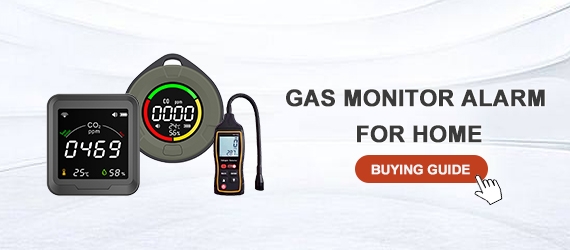
GasDog Industrial & Home Gas Detector Buying Guide
Since 2013, GasDog has focused on designing, manufacturing, and supplying superior gas detection systems. Our aim is "Gas Detection is as Accurate as a Sniffer Dog's Nose." Explore GasDog's detection and monitoring products, including industrial portable gas detectors, fixed gas detectors, home gas monitors and alarms etc. We are committed to providing you with reliable and efficient gas safety solutions.
How to Choose the Right Gas Detector?
- Usage scenario (industrial use or home)
- Type of gas detected (different industries or applications require different detection principles)
- Measurement accuracy and sensitivity (high-precision equipment for high-risk environments)
- Alarm method (whether it supports sound and light alarms, wireless/WiFi connection)
- Portable vs. fixed installation (personal safety vs. on-site monitoring)
- Power supply method (battery power vs. plug-in)
- Smart functions (optional: data logging, remote monitoring, APP connection, etc.)
- Certification and standards (ensure compliance with safety standards, such as ATEX, CE, etc.)
↓↓↓Click on the detailed buying guide below to learn more about selecting an industrial or home gas detector.
GasDog Industrial Gas Detector vs. Home Gas Monitor Alarm
| Feature | Industrial Gas Detectors | Home Gas Monitor Alarms |
| Use | Detecting various gases in industrial environments | Monitoring gas leaks in homes |
| Gas Types Detected | Multiple gases: CO, H2S, CH4, O2, NH3, H2, N2 etc. | Limited to common household gases: CO, CH4, CH2O |
| Detection Accuracy | High-precision sensors | Moderate accuracy for safety monitoring |
| Sensor | Electrochemical, infrared (NDIR), catalytic bead, PID | Electrochemical and semiconductor sensors |
| Alarm | Loud alarms, flashing lights, remote alerts, control system integration | Audible alarms, LED indicators |
| Data Logging & Connectivity | Real-time monitoring, remote access | Basic alerts, some models with Wi-Fi or smart app support |
| Power Supply | Hardwired, battery backup, or solar-powered | Battery-operated or plug-in models |
| Installation | Fixed, mounted at optimal locations based on gas type | Plug-and-play, wall or ceiling-mounted |
| Calibration | Requires periodic calibration | No calibration required |
| Environment | Designed for harsh environments (extreme temperatures, humidity, hazardous areas) | Indoor use, normal temperature and humidity conditions |
| Certifications | ATEX, CE, IP66/67 standards | Contact us |
| Cost | $$$$ (High, due to precision and features) | $-$$ (Affordable, suitable for home use) |
***Note
- Gas detectors and alarms are sold directly by GasDog. Please consult the Limited Warranty, Shipping & Returns, Privacy Notice and Conditions of Use for related terms and conditions before purchasing.
- The latest price list is available. If you would like to purchase our gas detection equipment in bulk or require a custom model, please contact us at sales@gasdog.com.


